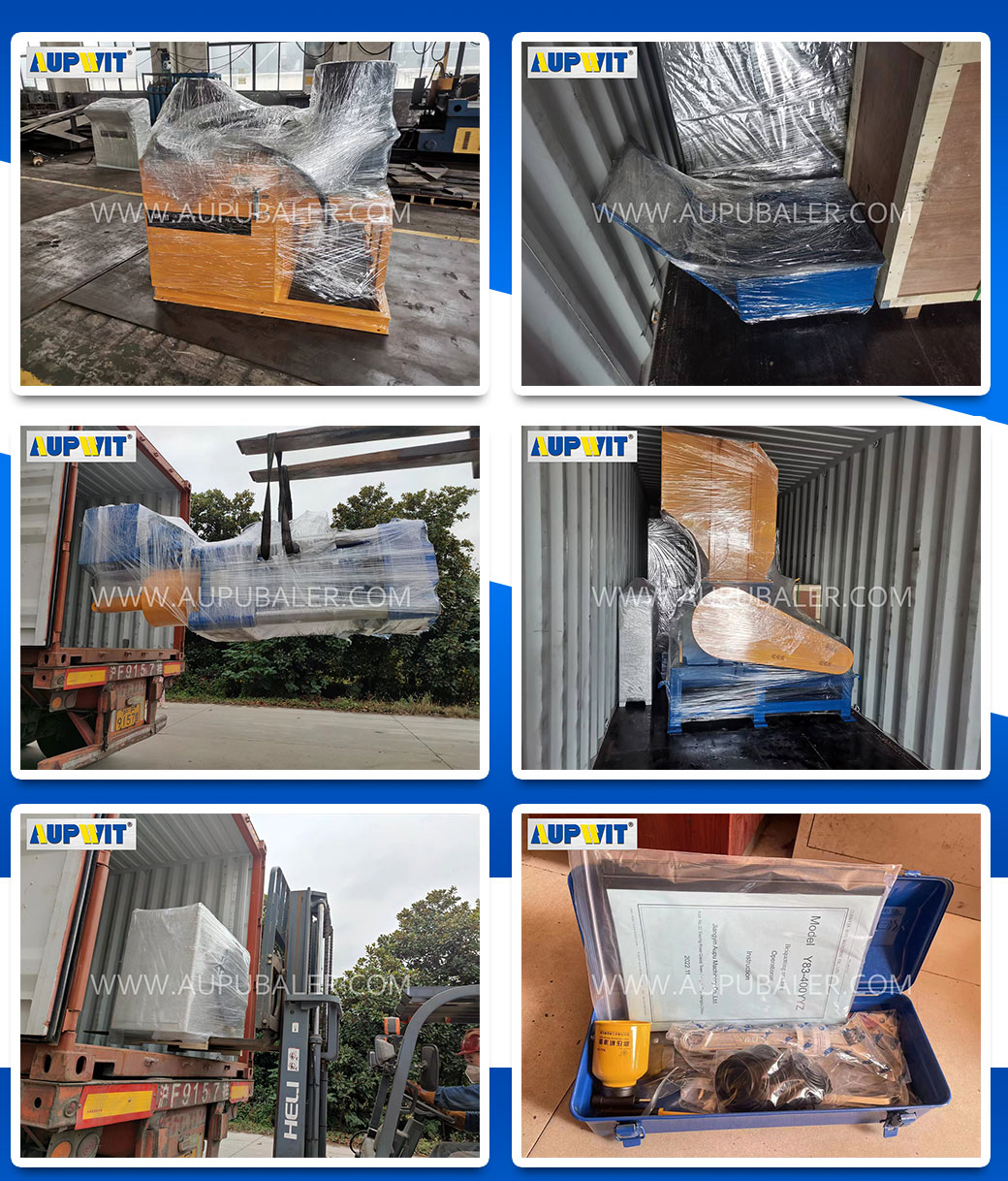A metal baler is highly effective in processing scrap steel, offering significant improvements in efficiency, safety, and sustainability across various industries. Here’s a detailed analysis of its performance:
1. Density and Volume Reduction
Metal balers excel at compacting loose scrap steel into dense, uniform bales. Using hydraulic pressure (typically 10–100 tons or more), they can compress irregularly shaped steel pieces (e.g., sheets, rods, pipes) into tightly packed blocks, reducing volume by 70–90%. For example, a 100-ton baler can transform 10 cubic meters of scattered scrap into a 1–3 cubic meter bale, drastically lowering transportation and storage costs. This densification also minimizes air gaps, reducing the risk of shifting during transit and enhancing logistics efficiency.
2. Processing Speed and Throughput
Modern balers are designed for high productivity. Semi-automatic or fully automatic models can process 5–20 tons of scrap steel per hour, depending on size and configuration. Continuous-feed systems allow for rapid loading, while automated tying mechanisms (e.g., wire or strapping) secure bales quickly. This speed is critical for recycling facilities or steel mills handling large volumes of scrap, ensuring minimal downtime and maximizing workflow efficiency.
3. Material Purity and Quality
Metal balers improve the purity of scrap steel by removing contaminants during compaction. Dirt, debris, or non-ferrous materials (e.g., plastic, wood) can be separated before baling, ensuring higher-quality feedstock for recycling. Tightly packed bales also reduce oxidation and corrosion during storage, preserving the steel’s metallurgical properties. This purity enhances the re-melting process, reducing energy consumption in furnaces and improving the quality of recycled steel products.
4. Safety and Environmental Benefits
By consolidating loose scrap into stable bales, metal balers eliminate hazards like sharp edges and unstable piles in workplaces, reducing the risk of injuries to workers. Additionally, compacted bales minimize wind-blown debris and water runoff, improving environmental compliance. For hazardous scrap (e.g., oil-coated steel), sealed baling can contain contaminants, preventing soil or water pollution.
5. Versatility and Cost-Effectiveness
Metal balers are adaptable to various scrap types, including thin sheets, heavy-duty structural steel, and even mixed metal waste. Smaller models (e.g., 20–30 tons) suit workshops or small recycling centers, while industrial-grade balers (100+ tons) serve large-scale operations. Although upfront costs range from $10,000 to over $100,000, the long-term savings in labor, transportation, and material recovery justify the investment. For instance, a baler can reduce labor costs by 30–50% by minimizing manual handling and sorting.









